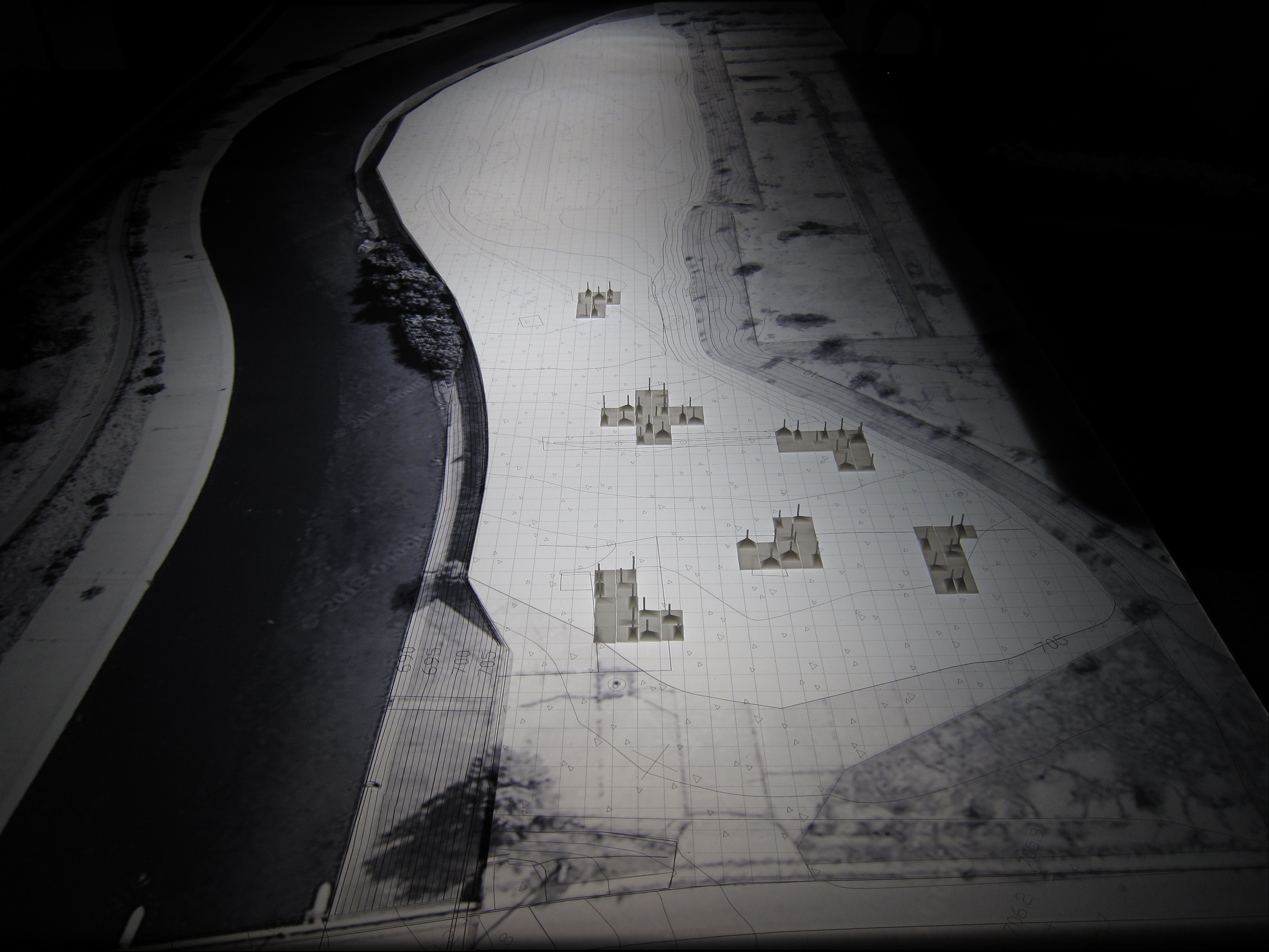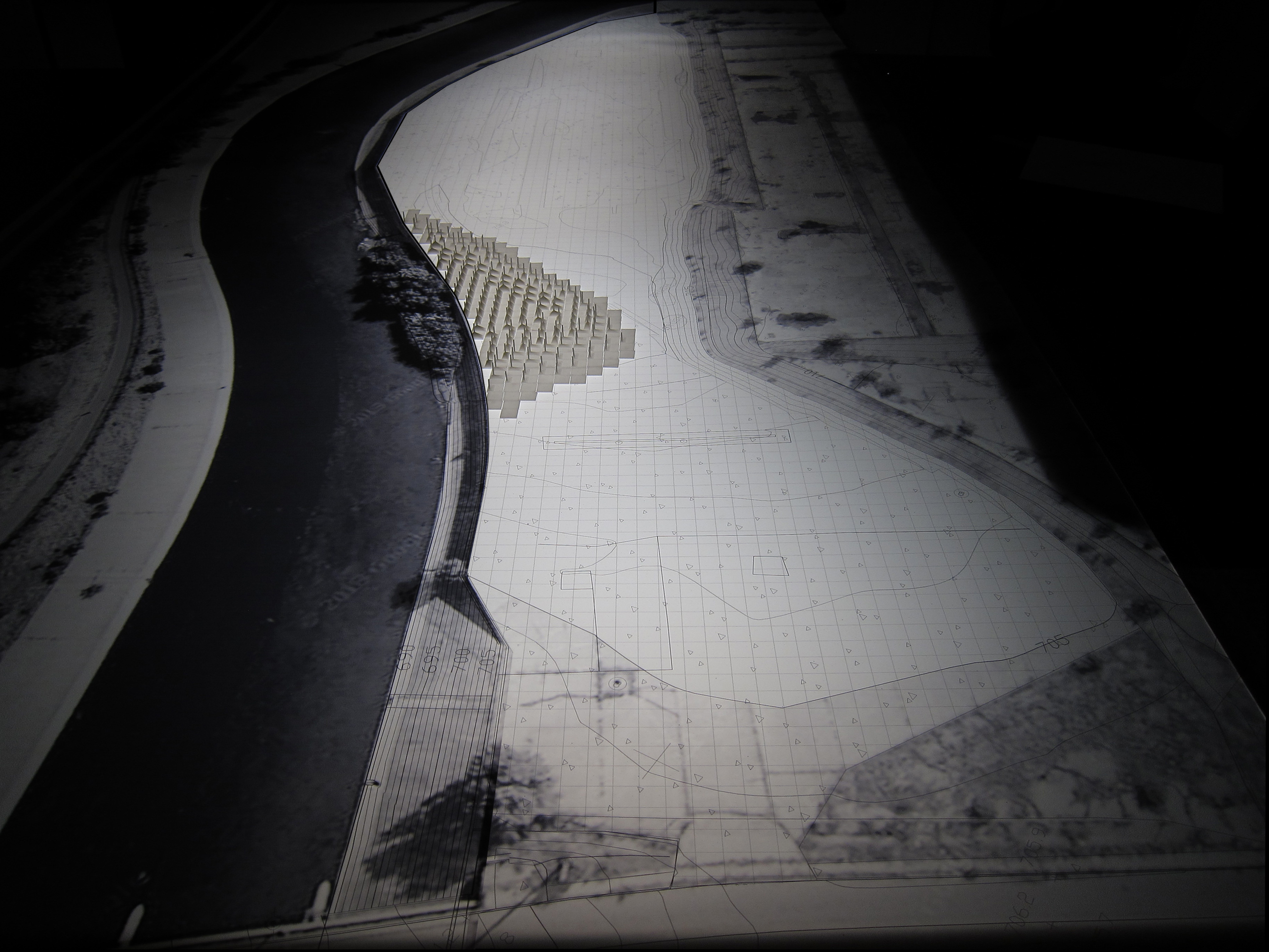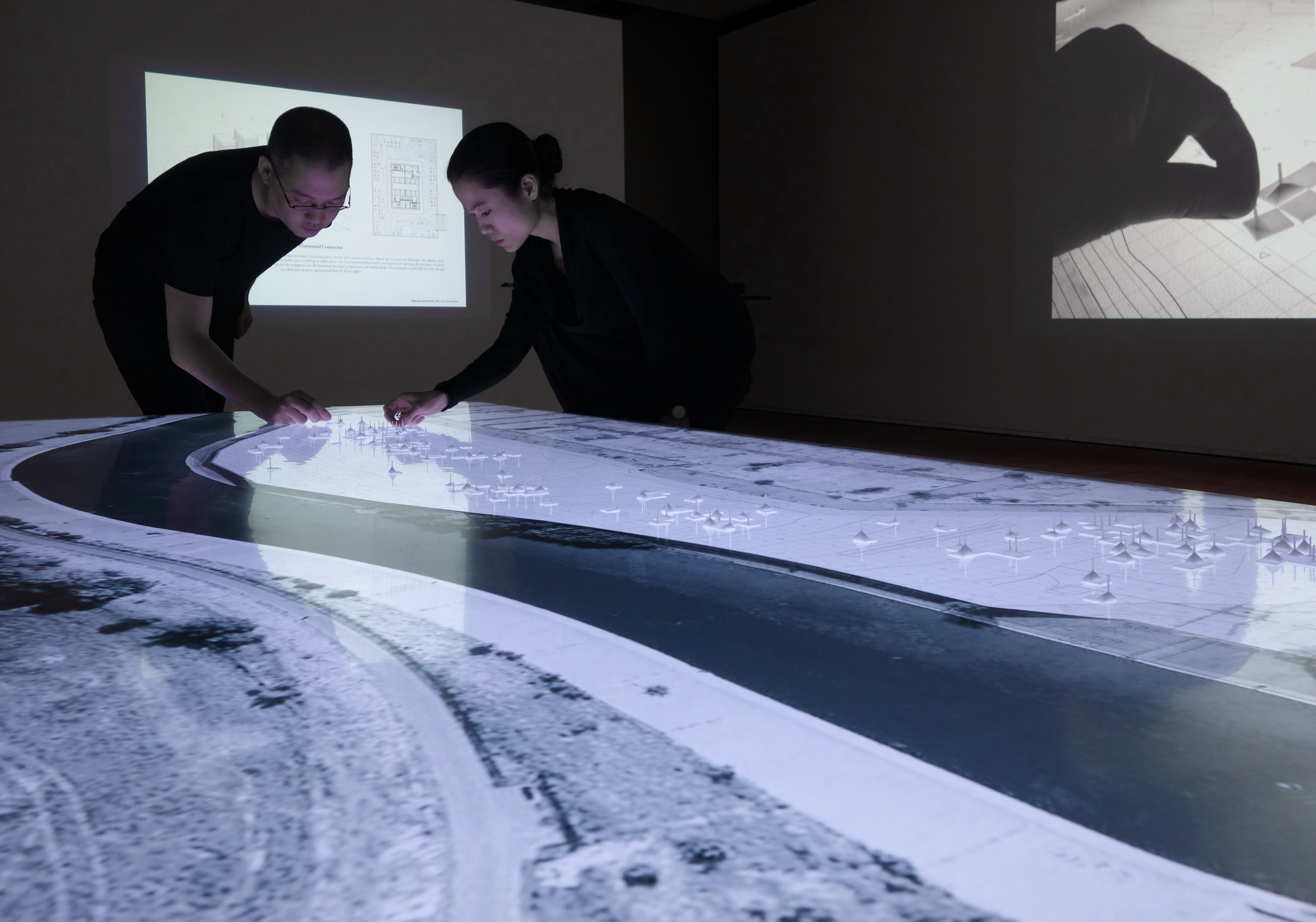Proposal for Chevy in the Hole
| The Flint Public Art Project |
| Cultural, Institution, Landscape, Public Space |
| Nahyun Hwang, David Eugin Moon, Danielle Beaulieu, Justin Kollar, Karen Lee, Max Obata, Dahee Sim, Lauren Tucker, Aaron Weller, Sheri Zon
|
While an indispensable site in the history of the U.S. auto industry, Chevy-in-the-Hole, the 130 acre abandoned manufacturing grounds in Flint, Michigan remains largely unrecognized. Once the most profitable facility in the history of GM and the site of the United Auto Workers' historic sit-down strike in 1936, the site is an emblem of the 20th century company town and its failures that represents the persistent predicaments and conflicts that arise in the complex relationship between labor, the corporation, and the city.
Despite years of conjecture by federal agencies, local government, non-profit organizations, and individuals, the site is still an urban void that self-asserts its indeterminacy and stagnation, unapproachable yet unavoidable in the center of the city. The project "Chevy-in-the-Hole" proposes an alternative use for the site articulating its potential as formal and informal civic spaces, transforming the urban void into the center of the city again. Acknowledging the site's potential as an effective grounds for experimentation for the future urbanism of similar sites, the project explores the productive roles of public vs. private, top-down governance vs. alternative methods of creation, and civic vs. capital, in maintaining of the space of the city.
The proposal for Chevy-in-the-Hole addresses and articulates the vast ground of the charged void and brings forward a new site for the city, acknowledging its transient state. Instigating the formal and informal occupation of the site, the itinerant modules of slab and column, the most basic elements of inhabitation, oscillate between object and field; figure and ground; and the desire for monuments and that for utility. The mobile modules and their forms supports predictable activities at the same time provoking unexpected uses, and their varying geometry creates a new occupiable terrain on the “Hole” and allows the formation of a secondary topography. Constantly shifting and reconfiguring, the figured grounds suggest and support a new, if tentative, productivity of the vast site.
![]()
Historical Documents from Chevy-in-the-Hole
![]() Flint Sit-Down Strike, 1937
Flint Sit-Down Strike, 1937
![]()
![]()

















